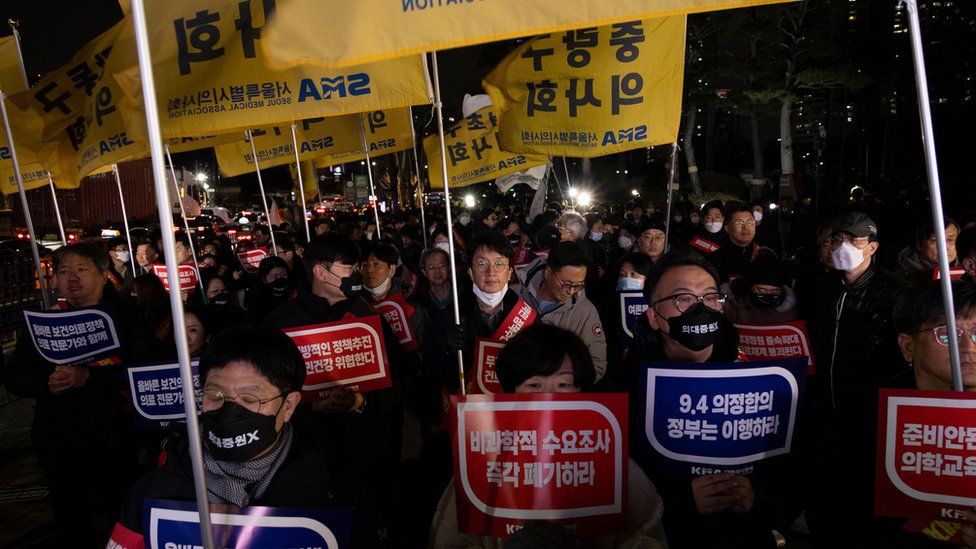South Korean doctors strike in protest of plans to add more physician
The South Korean government has told over 1,000 junior doctors to return to work following numerous walkouts staged in opposition to plans for expanding the doctor workforce.
Officials reported that more than 6,000 interns and residents had submitted their resignations on Monday.
With one of the lowest doctor-to-patient ratios among OECD countries, South Korea aims to augment medical school placements to address this disparity. However, doctors are resistant to the idea of heightened competition, according to observers.
South Korea operates a predominantly privatised healthcare system, where insurance payments are linked to most procedures, and over 90% of hospitals are privately owned.
The country’s doctors are among the highest-paid globally, with OECD data from 2022 indicating that the average specialist at a public hospital earns nearly $200,000 a year—well above the national average salary.
Despite these high earnings, South Korea currently has only 2.5 doctors per 1,000 people, marking the second-lowest rate among OECD nations, trailing behind Mexico.
“More doctors mean more competition and reduced income for them… that is why they are against the proposal to increase physician supply,” said Prof Soonman Kwon, a public health expert at Seoul National University.


